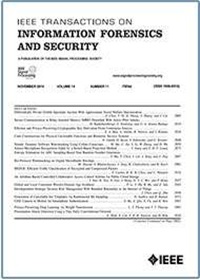Towards Effective Rotation Generalization in UAV Object Re-Identification
IF 6.3
1区 计算机科学
Q1 COMPUTER SCIENCE, THEORY & METHODS
IEEE Transactions on Information Forensics and Security
Pub Date : 2025-02-20
DOI:10.1109/TIFS.2025.3544088
引用次数: 0
Abstract
UAV surveillance offers a unique aerial perspective, enabling the monitoring of large areas and capturing targets from angles that fixed ground cameras cannot achieve. UAV-based object re-identification (ReID) differs from the extensively studied city camera scenarios, as it involves identifying specific objects in aerial images captured from a dynamic bird’s-eye view. The challenge lies in the significant variation in object perspectives and the often uncertain rotational changes captured by UAVs. Existing ReID methods designed for city cameras struggle to adapt to these rotational variations. To address these challenges, we propose a Transformer-based learnable rotation generalization enhancement method specifically for UAV-based ReID. To improve the model’s adaptability to uncertain rotational changes, we introduce a learnable feature-level rotation simulation technique that generates multiple rotated features. Building on this, we design a rotation diversification loss to decorrelate different rotated features, ensuring a rich feature representation. Additionally, to mitigate the negative effects of image-level rotation augmentation, we propose instance-level and distribution-level rotation invariance regularization. This approach establishes explicit associations between images and their rotated counterparts, facilitating the learning of visually consistent rotation-invariant features. Instance-level constraints ensure that detailed features remain consistent during rotation, while distribution-level constraints maintain the model’s semantic understanding. Notably, our method demonstrates strong versatility, covering a wide range of objects, including persons, vehicles, and various animals. Evaluations on multiple UAV-collected person and vehicle ReID datasets, as well as several animal datasets, consistently show outstanding performance, underscoring its robustness and adaptability to the unique challenges posed by UAV-based ReID.求助全文
约1分钟内获得全文
求助全文
来源期刊

IEEE Transactions on Information Forensics and Security
工程技术-工程:电子与电气
CiteScore
14.40
自引率
7.40%
发文量
234
审稿时长
6.5 months
期刊介绍:
The IEEE Transactions on Information Forensics and Security covers the sciences, technologies, and applications relating to information forensics, information security, biometrics, surveillance and systems applications that incorporate these features
 求助内容:
求助内容: 应助结果提醒方式:
应助结果提醒方式:


